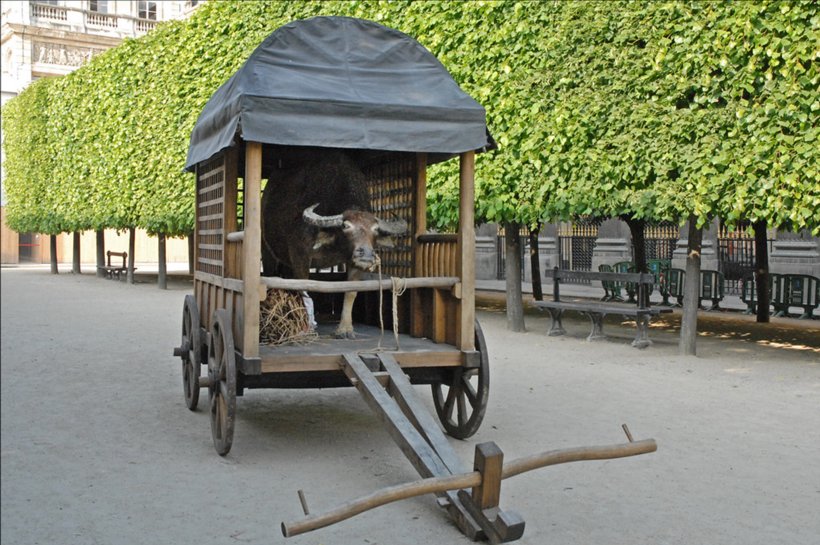Le jardin emprunté
An artistic event in the margins of the World Expo Shanghai 2010
Gardens of the Palais Royal — May-June 2010

Echoing the Shanghai World's Fair, the Royal Palace's gardens host a selection of monumental works by some of the most prominent personalities of the Chinese artistic community in France. World Expo Shanghai 2010 is undoubtedly one of the major events that will mark the beginning of the 21st century, witnessing the liveliness of a continent state in full expansion. This event is about to upset the architectural and cultural landscape of the Chinese economic capital in the manner of universal exhibitions of the beginning of the century that have marked the Parisian urban geography.
For a month, the sculptures presented in the gardens of the Royal Palace will bridge the two cities, highlighting the efforts of these artists of Chinese origin, established in France at the turn of the 1990s, shared between these two countries, their cultures and their stories. Marked by a libertarian ethic, this pleiad of artists turns out to be today key figures in the globalized contemporary art landscape, which is an obvious source of pride for the knowledge integrated in Paris.
Huang Yong Ping sets up a critical discourse of Western and Eastern cultures. Most of his works depict the animal kingdom, the heart of life in Chinese culture, for its symbolic character. Housed in a stationary and rudderless cart, a stuffed buffalo evokes the traditional Lao-Tseu mount, a metaphor for the thought of this wise Chinese man, who refused globalization, recommending to reach the understanding of the world without to cross the door of his home. Shen Yuan's work bears witness to a reality in recent Chinese history, the Three Gorges Dam, a financial windfall, known as the largest electricity generator in the world but also and above all ecological, human and cultural disaster. Borrowing from the Chinese art of the representation of the landscape, Shen Yuan sculpts in his Bellies of Rock, the declensions of this ravaged landscape. Wang Du's work is organized around his obsession with the media from which he extracts the most striking images, creating a "post-reality" oscillating between the real world and the world created by the media. Gigantic and worked by the perspectives accused of the photographic lens the models extracted from magazines and modeled in volume or oversized newspapers and crumpled in white steels mark out the course in the gardens. Yang Jiechang proposes a utopia realized, Eurasia, a nation at the crossroads of Asia and Europe to which he gives existence by a flag and sports events. Yan Pei-Ming, one of the first Chinese artists of the Tiananmen generation to settle in France, has become the emblematic portraitist of the mythical characters of our time.
Large flat areas of shades of black and gray emerge from the monumental faces in the pictorial mass. The Landscape of Childhood installation, composed of flags fluttering in the wind, is a look at the future embodied by the faces of very young Chinese, children of immigrants both inside the country and outside. The Memorial Garden of Chen Zen presents five relief views dedicated to the contemplation of the fabulous Chinese imperial garden of Yuanmingyuan, destroyed by the Franco-British troops in 1860. Only a few drawings remain of this mythical garden, inscribed in the Chinese collective memory. dating from the 18th century, not far from the BNF. This huge park was home to the flora and landscapes typical of each region of China, wanting a miniature model of the universe. Some elements, such as fountains, were borrowed through missionaries from European gardens, reflecting an early form of multiculturalism.

- Chen Zhen
- Huang Yong Ping
- Shen Yuan
- Wang Du
- Yan Pei-Ming
- Yang Jiechang